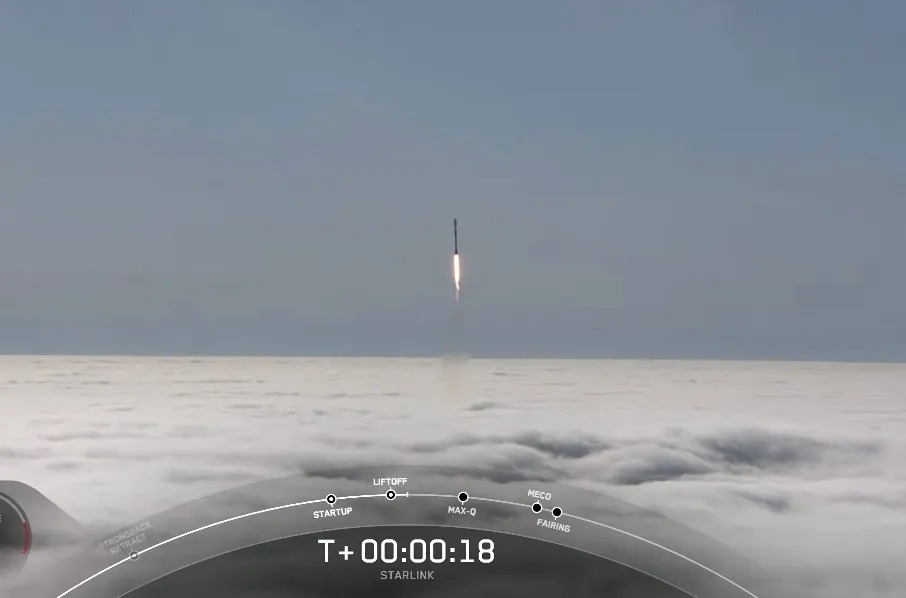On July 10, SpaceX successfully launched 46 new Starlink satellites into Earth orbit. The Falcon 9 rocket launched from the Space launch Complex 4 East (SLC-4E) at the Vandenberg Space Force Base in California at 06:30 p.m. local time. As usual, SpaceX conducted a live broadcast of the early stages of the mission. It was difficult to observe the flight from the surface, because the area was covered with thick fog. But it added to the charm of the live broadcast, which showed a striking picture when the rocket rose above a thick blanket of clouds.

Approximately 100 seconds after the launch, the rocket reached full power. After 150 seconds, confirmation was received about the shutdown of the main engine and the separation of the upper stage. After separation, the first stage of the Falcon 9 returned to Earth, making a perfect landing on the unmanned ship Of Course I Still Love You, waiting in the Pacific Ocean off the coast of California. Unfortunately, the live broadcast broke down just when the rocket landed. Meanwhile, the successful deployment of satellites in low Earth orbit took place in space.
Liftoff! pic.twitter.com/bojQcPXiZC
— SpaceX (@SpaceX) July 11, 2022
This particular first stage of the Falcon 9 launch vehicle made its fifth successful launch. Previously, it took part in the Sentinel-6, Michael Freilich, DART missions, as well as in three Starlink launches. In total, since June 2010, all Falcon 9 rockets have been launched 166 times, 164 of which were recognized as successful. In addition to delivering Starlink satellites into orbit, the rockets also send satellites into space for private companies and organizations, as well as deliver astronauts and cargo to the International Space Station.
Starlink and Ukraine
Starlink is the name of the SpaceX network, consisting of about 2 thousand low-orbit satellites designed to transmit the Internet around the world. Starlink allowed the Ukrainian military and ordinary citizens to stay online in the regions affected by the Russian invasion. Terminals allow officials and service providers to citizens to continue to maintain contact with the outside world at high speed. Moreover, the connection remains stable and reliable even if the enemy interrupts the infrastructure of fiber-optic or cellular communications in Ukraine.
SpaceX CEO Elon Musk provided 15,000 Starlink terminals to Ukrainians for free. But in safe regions, Starlink could potentially bring Elon Musk up to USD 50 billion in annual revenue if the company manages to win at least a few percent of the global telecommunications market.
Follow us on Twitter to get the most interesting space news in time
https://twitter.com/ust_magazine
